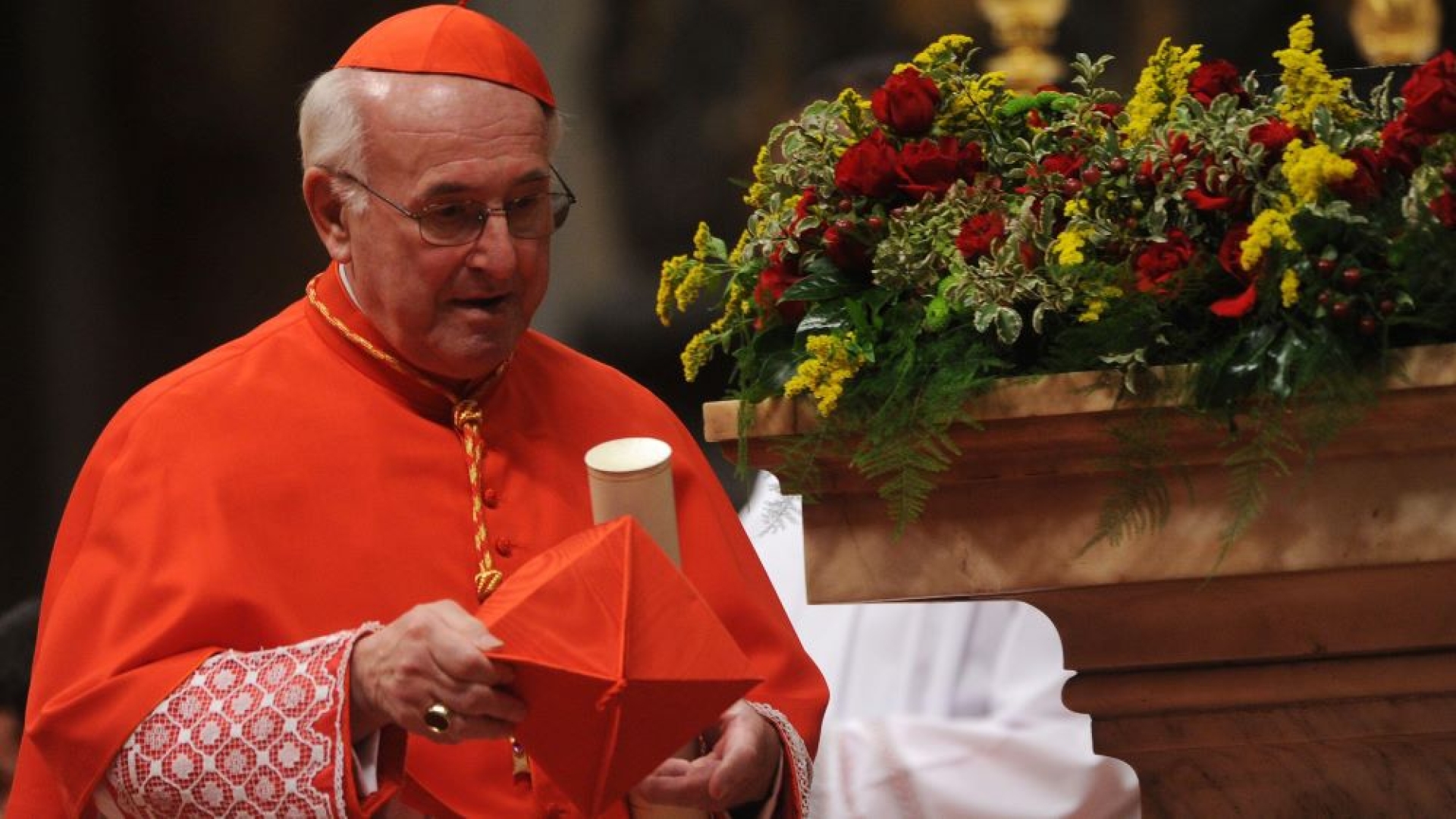Cardinal Brandmüller: “Oases in the Desert”

Cardinal Walter Brandmüller during his induction into the cardinalate on November 20, 2010
Cardinal Walter Brandmüller, who celebrated his 95th birthday earlier this year, published an article on the German-language site Kath.net, in which he did not mince words against the Church in Germany. He developed a reflection on the course to follow in the current situation, which quite frankly turns towards tradition.
Cardinal Brandmüller, who signed the two dubia letters addressed to Pope Francis in 2016 and 2023, took up his pen again to deplore the state of the Church and to propose solutions to priests and the faithful in the situation of current crisis.
A Disillusioned Observation
He notes that “as might be expected, the Synodal Path has long since lost its way.” The results: millions of euros of church tax money spent and “discord in central questions of faith and moral doctrine,” even among bishops, which allows talk of heresy and schism.
The state of Catholicism in Germany is one of “mass apostasy.” As for the seminaries, where they are not closed, they are almost empty. “But,” notes the cardinal, “the places of formation of certain communities – such as the Fraternity of St. Peter, the Institute of Christ the King, the Community of Saint-Martin, the Heiligenkreuz [Sacred Heart] convent – enjoy an active life and are increasing.”
A Bygone Period of Christianity
The cardinal historian recalls that “In the decades after the Second World War, the Catholic social doctrine was the basis for the reconstruction and development of the Federal Republic of Germany under Konrad Adenauer.” But “with the success of the German economic miracle, the increasingly thick clouds of the materialistic zeitgeist began to block the view of the sky.”
The wave of earthly goods “overwhelmed the land.” The result was “a post-Christian, atheist society, in which Christianity, the Church, only has a niche existence. Ignored, despised, fought.” Thus “in most areas of Germany, the Church has had to exchange its former place of honor for the dock of the accused.”
Article lié :
A Distorted and Apostate Society
The report further notes that “the latest legislation has also set standards in the field of marriage, family and health policy, which scorns Christian morality and social doctrine, even anthropology developed since classical antiquity.” Thus “Hardly any perversion conceivable, from in vitro fertilization to euthanasia and assisted suicide, has been locked out.”
We must therefore react: “And now the Christian, the Catholic who finds himself in this human, cultural desert, must create oases where he can still breathe freely and survive.” This will require moving from a “strong church presence to a church of small communities.” This development, for the cardinal, is inevitable.
Give the Priest His Place Again
To achieve this evolution, the cardinal calls for “a more decisive emphasis in the self-image of the priests.” To describe this image, the prelate appeals to “the ancient rite of ordination” which enumerated the duties of the priest: “he was consecrated to offer the holy sacrifice, to bless, to lead the Church, to preach and to baptize.”
And he adds that “there is no mention of parish administration, committees or asset management and management of social institutions or other works.” He finally notes that “this catalogue of duties dates back to the Middle Ages, but it contains precisely the action to which the priest is consecrated today as ever.”
He clearly drives the point home: “The committee and meeting Catholicism, which has flourished since Vatican II, has already become a discontinued model, and hardly anyone – apart from the ‘officials’ of the Central Committee – will shed a tear.”
Also, “this distinction, which reserves to the priest only the ‘praeesse’ – the presidency – the direction of the community, must be made to allow the priest the freedom to fulfill his actual mission: preaching, the liturgy, the administration of the sacraments. and pastoral care.” In other words, everything the innovators want to strip away.
Related Article:
The Role of the Laity
As for the laity, explains Cardinal Brandmüller, “just like the priests, they also follow their own vocation. Their area of responsibility is not the pulpit and the altar, but, as Vatican II emphasizes, ‘the world’ in which the Church must carry out her mission.”
Thus, a healthy distribution of tasks “provided that collaborators are chosen carefully and that mutual trust reigns” would allow the priest “to gain the time necessary for the conscientious preparation of preaching, catechesis, pastoral maintenance, and his own spiritual life.”
The cardinal concludes with these words: “living communities, like islands in the sea, could provide a safe haven for people drifting aimlessly on the waves of the zeitgeist.”
Although the cardinal’s analysis is aimed first and foremost at Germany, it must be extended to all Catholic countries, which suffer, more or less, in one way or another, this “silent apostasy” already denounced by John Paul II. The plan that the German cardinal envisages for his country must be carried out throughout Christendom.
(Source : Kath.net/InfoCatolica – FSSPX.Actualités)
Illustration : Banque d’Images Alamy





